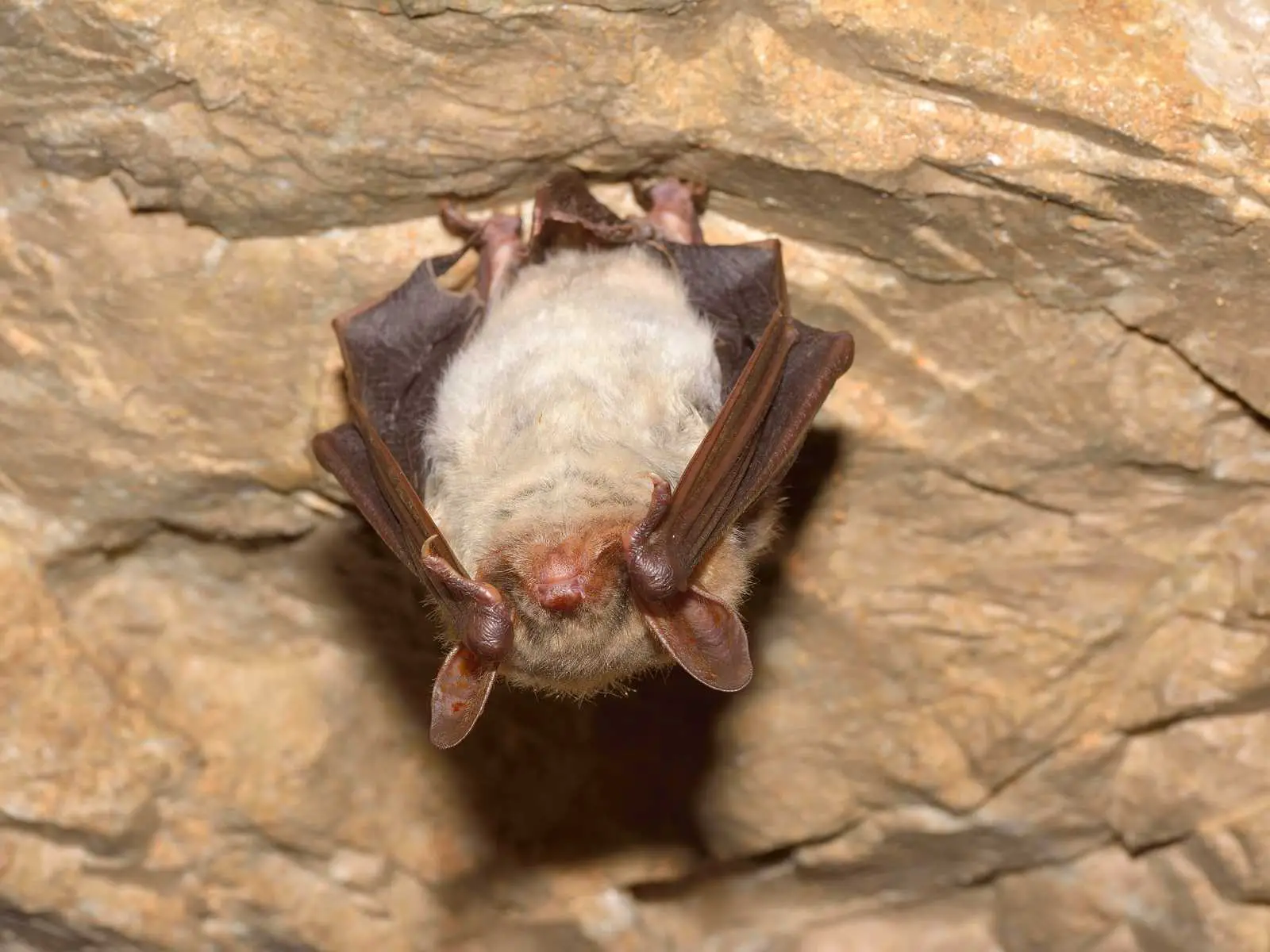Bats are one of those animals which people tend to mythologize more than they actually understand. Over the centuries, we have developed an image of bats as blood-sucking terrifying creatures of the night, when most are simply cute little fuzzballs which won’t bother you as long as you don’t bother them. Count Dracula these bats are not.
Another example of bats and myths colliding is the phrase “blind as a bat.” It has long been used to describe someone or something acting as though they are absolutely sightless. This is heightened by the fact that bats are famous for finding their way in the night by sonar rather than by sight.
However, that doesn’t mean that bats are “blind.” As Singapore’s National Parks Board notes, not only are bats not blind, but they can see perfectly fine out of both eyes.
In short, bats may not be singing “I Can See Clearly Now,” but they can indeed see, though how and to what extent they can see varies between species, and their vision is very different from our own.
With that in mind, let’s try to see bat vision a bit more clearly, dispel those blindness rumors, and see the world as bats see it.
Of Bats and Blindness
Well, maybe they’re not “blind,” but can bats see in the dark? Again, as we’ll see, the answer is yes, but before we get into how bats do that, let’s take a step back and ask why people believe bats are blind in the first place.
The source of that myth seems to be a combination of bats’ nocturnal lifestyle and their echolocation and hearing abilities. We may also be projecting onto bats our own association of heightened hearing abilities with blindness. We know that some blind people hear better, though this itself is an oversimplification, since while it’s true that our other senses can compensate for the loss of a sense such as sight or hearing, that does not necessitate better hearing. Likewise, just because bats have enhanced hearing doesn’t mean they suffer from blindness.
It’s also worth noting that just because we may feel “blind” in the dark doesn’t mean that’s the case for bats. On the contrary, bats’ eyes are actually very well attuned to what would for us be low-visibility conditions. That’s in part because their eyes have lots of photoreceptor cells called rods, which are sensitive to light. Having more rods means bats can see even in low-light conditions.
This is common for nocturnal animals, and helps bats see in conditions which would be difficult to impossible for humans and other creatures who are most active (at least normally) during the daytime.
It is true that bats don’t have the same kind of color vision as humans do. At the same time, we don’t have their ability to see with good clarity in low-visibility conditions. Animals adapt to their environment, and bats have evolved a different form of sight than ours, but that doesn’t make them any blinder than we are. Rather, they simply have a different way of seeing the world – literally.
Bats, Folklore, and the Myth of Vision and Blindness
That whole “blind as a bat” trope isn’t the only folktale surrounding bat vision. On the contrary, cultures around the world have repeatedly incorporated bats into their folkloric traditions, often in the context of sight.
For example, folkloric traditions in the Caribbean held that washing your face or eyes with bats’ blood would improve one’s vision. Likewise, the Ancient Egyptians believed bats could be used as a cure for bad eyesight. In some Native American cultures, bats, like coyotes, were trickster gods and figures who could be associated with “seeing clearly” in a more metaphorical sense. By contrast, bats’ association with the underworld in Greek mythology, Shakespeare’s inclusion of “wool of bat” in the Witches’ potion in Macbeth, and of course Bram Stoker’s Dracula all contribute to the West’s association of bats with death, darkness, and the unknown – another potential reason why we associate them with “blindness.”
About Bats’ Actual Vision
Now that we’ve seen through the “blindness” myth, let’s take a closer look at bats’ vision abilities.
The phrase “blind as a bat” is especially ironic given the fact that, according to Robert Mies of the Organization of Bat Conservation, some bats can see as much as three times “better” than humans, again, especially when it comes to seeing at night.
Finally, it is worth noting that, with more than 1,300 bat species in the world, not all bat species are equally adept at seeing. For example, larger fruit bats tend to have better eyesight than smaller insectivorous bats. A more formal division of bats is between larger megabats and smaller microbats, and here again, that vision difference plays out. Megabats have larger eyes and more fox-like faces, whereas microbats have smaller faces and eyes. That difference influences their vision capabilities, with megabats having significantly better eyesight than microbats. In fact, while we tend to associate echolocation with bats, megabats can also use their vision and smell in hunting.
As such, the question “do bats have good eyesight?” really oversimplifies things – some bats do, other bats don’t, and it also depends what is meant by “good eyesight.”
Can bats see in the dark?
Yes, and far better than us.
Can bats see color?
A few can, possessing S-opsin and L-opsin proteins, which provide them with blue and ultraviolet as well as red and green vision, respectively. However, most bats lack this ability, and studies of bats in Central and South America have revealed that, rather than never having had this vision, these bats may have lost it over successive generations. The fact that color vision can potentially come and go for a species of bat as different genes come and go in humans is noteworthy, given how we tend to think of vision capabilities as “permanent.” The bats in these studies may potentially represent a powerful counterexample to that claim, and a compelling new path of study in evolutionary biology.
In keeping with the observation that different bats have different vision capabilities, a 2009 study conducted for PLOS ONE found that two different kinds of South and Central American bats – Pallas’s long-tongued bat and Seba’s short-tailed bat – do indeed have receptors which allow them to see not just color but, breaking another commonly-held belief about bats, in daylight as well. Not only that, but some of their receptors may allow them to see different wavelengths on the ultraviolet spectrum than humans, meaning they can potentially see “colors” that we cannot. If that sounds familiar, consider that insects such as bees are also able to see ultraviolet wavelengths that we cannot, which is part of what attracts them to different flowering plants and the nectar inside them. In keeping with that, several bat species are also known to nosh on nectar from time to time.
In addition, a 2015 study published by Current Biology examining Egyptian fruit bats looked at the connection between vision and echolocation. In darker areas, bats used echolocation more, and yet continued to make clicking noises even when exposed to bright light. The bats were also found to speed up their echolocation after they had landed, hinting at a combination of both sight and sonar capabilities, rather than the latter compensating for a deficiency in the former.
Moving to North American bats, a 2003 study in Animal Behavior examined brown long-eared bats and their vision capabilities and, as with the Egyptian fruit bats, found they performed best when they combined their sonar and sight capabilities. Meanwhile, a 2009 study in Biochemical Systematics and Ecology suggested that little brown bats had enough visual capability to navigate by moonlight and avoid potential predators at twilight.
In addition, bats obviously need to find mates, and while they might be able to use echolocation to find one another, that also takes the idea of “a blind date” a bit too far. Like other animals, some bats engage in courtship rituals, and obviously, if you’re going to try and show off for a potential mate, it helps if they are able to see you.
Finally, it is important to remember that bats aren’t always the predator; they are sometimes the prey, and as such, bats’ vision is important for predator avoidance as well.
Final Thoughts
Are all bats blind? The simple answer is no – as stated, bats are not blind and can indeed see. Not just that, but as demonstrated by the wealth of evidence above, they can actually see in many different ways and use their vision for just as many purposes. While some bats are colorblind, others are not, and in fact, some bats may have better visual capabilities than humans in some capacity, especially when it comes to night vision and some bats’ ability to see beyond our range of ultraviolet light sensitivity.
In short, the only ones “blind as a bat” are humans, for not having a clearer idea of how bats see. Once you see through the fiction, the facts behind how bats can see present a much more colorful picture.

